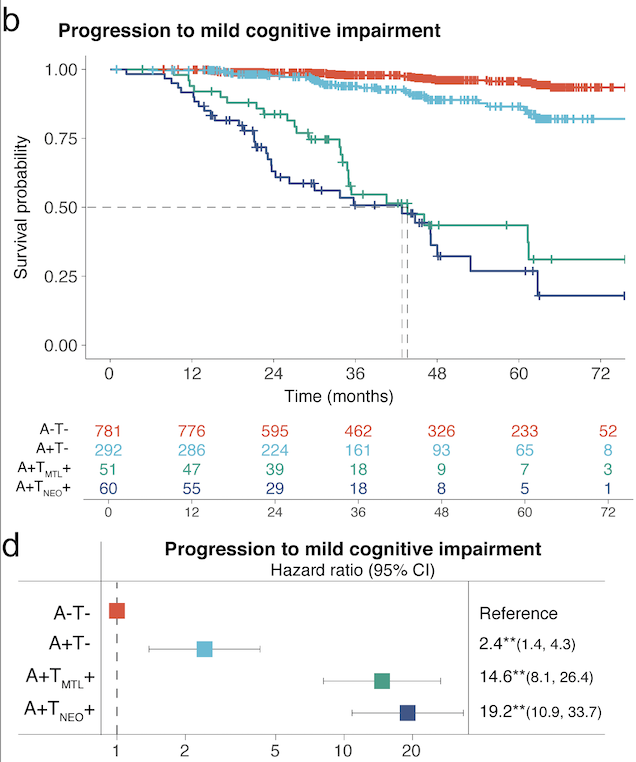
Are #Amyloid and #Tau #PET positive cognitively unimpaired individuals destined to decline?
Find out in our new preprint: bit.ly/3yXRrOf.
See a thread👇1/11
Find out in our new preprint: bit.ly/3yXRrOf.
See a thread👇1/11

A major unanswered question in the field is whether cognitively unimpaired (CU) individuals who harbor both #Alzheimer’s disease neuropathological hallmarks (abeta #plaques and tau neurofibrillary #tangles) can preserve their #cognition over time or are destined to decline. 2/11
There is fundamental disagreement about the nomenclature. E.g. a CU individual with positive Abeta (A+) and tau (T+) biomarkers is classified as “preclinical AD” by the NIA-AA criteria, while the IWG criteria would label such an individual “at risk for progression to AD”. 3/11 

In this multi-center study we included 1325 cognitively unimpaired individuals with baseline tau and amyloid PET and longitudinal cognitive assessment (mean FU = ~3.5 years) from 7 cohorts: Mayo clinic, BioFINDER-1 and 2, AIBL, HABS, BACS and the Amsterdam Dementia cohort. 4/11 

We examined the risk for future progression to mild cognitive impairment/dementia and the rate of cognitive decline over time among cognitively unimpaired individuals who were amyloid PET-positive (A+) and tau PET positive (T+) and compared them with A+T- and A-T- groups. 5/11
The T+ group was further divided based on tau PET positivity in the medial temporal lobe alone (A+TMTL+) and/or in the neocortex (A+TNEO+). 6/11 

Cox proportional hazard models showed a substantially increased risk for progression to mild cognitive impairment (left) or all-cause dementia (right) in the A+TNEO+ and A+TMTL+ groups vs the A+T- and A-T- groups. 7/11 

Linear mixed effect models yielded similar results when using longitudinal change on cognitive measures like the mPACC5 (left) and MMSE (right) as the outcome. 8/11 

We conclude that evidence of advanced AD pathological changes provided by amyloid and tau PET is strongly associated with short-term (i.e., 3-5 years) cognitive decline in cognitively unimpaired individuals and is therefore of high clinical relevance. 9/11
We think that these results support the NIA-AA criteria-based classification of A+T+ CU individuals as “preclinical AD”, certainly when “T” is defined by PET. 10/11
Many thanks to all authors for making this study possible, especially to @alexa_pichetb, Cliff Jack & @OskarHansson9! And of course, to all authors from @biofinder_study, @AlzheimerAms and the other (twitterless) cohorts. 11/11
• • •
Missing some Tweet in this thread? You can try to
force a refresh



